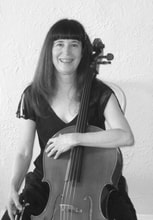Writing a Poem that is Larger Than You Are by Diane Frank
“Our instinct is to turn to poetry when we’re looking to communicate a spirit that is larger than ourselves.”
~ Amanda Gorman (Time magazine interview, February 4, 2021)
**
One of the amazing gifts of being a poet is what comes into being during the writing process. It might be something that reveals itself as you are writing – something that stuns and surprises you. As a writer or reader, I love to discover poems that are larger than what they begins to speak about. I want the poem to take a flying leap to a realm that is larger and deeper.
I remember the first time I opened Twelve Moons by Mary Oliver. From the first poem, “Sleeping in the Forest,” I was smitten with her book. From the opening lines – “I thought the earth / remembered me” – she takes me into the language of the soul. I love the sensuality in the way she describes the earth – “arranging / her dark skirts, her pockets / full of lichens and seeds.” Then she stuns me – “nothing / between me and the white fire of the stars...” Line by line, her images let me see the world in a different way as we move toward the final transcendent image: “By morning / I had vanished at least a dozen times / into something better.”
In “Harvest Moon – The Mockingbird Sings in the Night,” she writes about the natural world – what she sees, how she feels, what she knows. “No sky could hold / so much light ...” At the same time, she is so lit up with love, with grief, with spirit, with the amazing experience of being human and walking through the world with her heart on fire, that her poems break boundaries. “The sky seems stretched / like an old black cloth; / behind it, all / the celestial fire / we ever dreamed of!” At key places, she transforms her images into something larger than they were. “And the moon steps lower, / quietly changing / her luminous masks...” By now, I’m seeing the night sky in a new and better way than I’ve seen it before. Along with this, the sensuality in Mary Oliver’s poems is astounding – “brushing / everything as she passes / with her slow hands / and soft lips ...” Writing an extraordinary poem is very much about finding language that opens this way to the reader.
Reading a poem like this makes me happy to be alive, even in a world as difficult as this one has become. In your own writing, when you get to the deeper place, it’s an act of grace, a tiny miracle. It’s like transcendence in meditation – you sit, do your practice, and suddenly the universe opens up. Poems with this depth of vision made me fall in love with poetry early in my life and keep bringing me back to poetry. When I need to remember the amazement and deep peace the world offers, I’ll open Mary Oliver’s New and Selected Poems and take a deep dive.
Writing a poem that is larger than you are is not a matter of intellect or sitting down with the intention to do this. It’s about writing from a deep place in your soul, with all of your senses open, your emotions transparent and even raw, and your heart on fire. Poems that do this can be intensely personal, but somehow, thorough the mysterious process of writing, reach the larger place. They guide you into the wildness and depth of the world with vision, meditative silence, leaping and light.
As an example from my own writing, I’d like to share “Tree of Life.” During the synagogue shooting in Pittsburgh, I lost a dear friend from high school. Jerry Rabinowitz was in my circle of friends, not just someone across the room. He’s the physician who ran into the sanctuary with an active shooter to see if he could save anyone and lost his life in the process. I was devastated, as were all of his friends and family. Four days after the shooting, I woke up with this poem.
Tree of Life
Kaddish for Dr. Jerry Rabinowitz
It’s a form of praying,
to hold the darkness inside yourself
and embrace it
the way you would hold water
in a flowing river.
To wake up
with tears flowing from a dream
your face a field
of milkweed
as the pods scatter
in a wind of prayer
embracing the growing cold.
I remember where he sat
by the window
at the bottom of the flood plain
where the rivers emptied
into the streets that afternoon.
Fire trucks creating a wake
as they moved through the water.
And when the bullets came
he ran toward the shattering souls,
following his instincts
always to help,
to heal the wounded
and the dying.
His friends
hold each other
reaching out through time
and a dark river –
holding seeds planted long ago
by the Tree of Life,
say Kaddish in front of an open
Ark of the Covenant.
He would want you to find your light
and embrace it again,
to walk back into the forest
we call the world.
Hold his memory
the way you would hold his face.
Let his voice ripple
through time.
Where the trunk of a redwood tree
thick with the rings of centuries
was burned by lightning,
shine your light
into the dark world.
~ Diane Frank
This poem opened the path for me to begin to heal, “to walk back into the forest / we call the world.” Three weeks after the shooting, I met Matthew Arnerich, a gifted composer from Santa Rosa, California. He composed the “Tree of Life Variations,” inspired by my poem and performed by the Golden Gate Symphony. The piece begins with me on the podium with the conductor. I read my poem and then walk to the cello section to play. During intermission at the concert, I was swarmed by people who wanted to talk to me, many of them in tears. Every time I play this piece, I move through a new layer of healing. My hope is that this poem will continue to heal those who have lost family and friends during the current pandemic of mass shootings. Poets, as the voice of the conscience of our society, need to speak about these things.
The whole key to writing a poem that is extraordinary is providing entrance to another dimension. What is your vision? Is there an opening to your vision in the poem? How can a walk in nature be a meditation? Or a prayer?
Pay attention to the way you use light. Pay attention to the way you use sound. Pay attention to silence and cacophony. But more than this, pour what is in your heart and soul into the page, along with what you see.
Writing a poem about the natural world is very much like meditation. In meditation, you close your eyes, breathe, think the mantra effortlessly, and let go. Transcending comes or not. And when writing, you write your poem. You do your daily practice. Chop wood. Carry water. You see what leaps onto the page and then you play with it. The language itself can lead you somewhere unexpected. When you find a way to reach the transcendent core of a poem, that poem will continue to speak through time.
~ Amanda Gorman (Time magazine interview, February 4, 2021)
**
One of the amazing gifts of being a poet is what comes into being during the writing process. It might be something that reveals itself as you are writing – something that stuns and surprises you. As a writer or reader, I love to discover poems that are larger than what they begins to speak about. I want the poem to take a flying leap to a realm that is larger and deeper.
I remember the first time I opened Twelve Moons by Mary Oliver. From the first poem, “Sleeping in the Forest,” I was smitten with her book. From the opening lines – “I thought the earth / remembered me” – she takes me into the language of the soul. I love the sensuality in the way she describes the earth – “arranging / her dark skirts, her pockets / full of lichens and seeds.” Then she stuns me – “nothing / between me and the white fire of the stars...” Line by line, her images let me see the world in a different way as we move toward the final transcendent image: “By morning / I had vanished at least a dozen times / into something better.”
In “Harvest Moon – The Mockingbird Sings in the Night,” she writes about the natural world – what she sees, how she feels, what she knows. “No sky could hold / so much light ...” At the same time, she is so lit up with love, with grief, with spirit, with the amazing experience of being human and walking through the world with her heart on fire, that her poems break boundaries. “The sky seems stretched / like an old black cloth; / behind it, all / the celestial fire / we ever dreamed of!” At key places, she transforms her images into something larger than they were. “And the moon steps lower, / quietly changing / her luminous masks...” By now, I’m seeing the night sky in a new and better way than I’ve seen it before. Along with this, the sensuality in Mary Oliver’s poems is astounding – “brushing / everything as she passes / with her slow hands / and soft lips ...” Writing an extraordinary poem is very much about finding language that opens this way to the reader.
Reading a poem like this makes me happy to be alive, even in a world as difficult as this one has become. In your own writing, when you get to the deeper place, it’s an act of grace, a tiny miracle. It’s like transcendence in meditation – you sit, do your practice, and suddenly the universe opens up. Poems with this depth of vision made me fall in love with poetry early in my life and keep bringing me back to poetry. When I need to remember the amazement and deep peace the world offers, I’ll open Mary Oliver’s New and Selected Poems and take a deep dive.
Writing a poem that is larger than you are is not a matter of intellect or sitting down with the intention to do this. It’s about writing from a deep place in your soul, with all of your senses open, your emotions transparent and even raw, and your heart on fire. Poems that do this can be intensely personal, but somehow, thorough the mysterious process of writing, reach the larger place. They guide you into the wildness and depth of the world with vision, meditative silence, leaping and light.
As an example from my own writing, I’d like to share “Tree of Life.” During the synagogue shooting in Pittsburgh, I lost a dear friend from high school. Jerry Rabinowitz was in my circle of friends, not just someone across the room. He’s the physician who ran into the sanctuary with an active shooter to see if he could save anyone and lost his life in the process. I was devastated, as were all of his friends and family. Four days after the shooting, I woke up with this poem.
Tree of Life
Kaddish for Dr. Jerry Rabinowitz
It’s a form of praying,
to hold the darkness inside yourself
and embrace it
the way you would hold water
in a flowing river.
To wake up
with tears flowing from a dream
your face a field
of milkweed
as the pods scatter
in a wind of prayer
embracing the growing cold.
I remember where he sat
by the window
at the bottom of the flood plain
where the rivers emptied
into the streets that afternoon.
Fire trucks creating a wake
as they moved through the water.
And when the bullets came
he ran toward the shattering souls,
following his instincts
always to help,
to heal the wounded
and the dying.
His friends
hold each other
reaching out through time
and a dark river –
holding seeds planted long ago
by the Tree of Life,
say Kaddish in front of an open
Ark of the Covenant.
He would want you to find your light
and embrace it again,
to walk back into the forest
we call the world.
Hold his memory
the way you would hold his face.
Let his voice ripple
through time.
Where the trunk of a redwood tree
thick with the rings of centuries
was burned by lightning,
shine your light
into the dark world.
~ Diane Frank
This poem opened the path for me to begin to heal, “to walk back into the forest / we call the world.” Three weeks after the shooting, I met Matthew Arnerich, a gifted composer from Santa Rosa, California. He composed the “Tree of Life Variations,” inspired by my poem and performed by the Golden Gate Symphony. The piece begins with me on the podium with the conductor. I read my poem and then walk to the cello section to play. During intermission at the concert, I was swarmed by people who wanted to talk to me, many of them in tears. Every time I play this piece, I move through a new layer of healing. My hope is that this poem will continue to heal those who have lost family and friends during the current pandemic of mass shootings. Poets, as the voice of the conscience of our society, need to speak about these things.
The whole key to writing a poem that is extraordinary is providing entrance to another dimension. What is your vision? Is there an opening to your vision in the poem? How can a walk in nature be a meditation? Or a prayer?
Pay attention to the way you use light. Pay attention to the way you use sound. Pay attention to silence and cacophony. But more than this, pour what is in your heart and soul into the page, along with what you see.
Writing a poem about the natural world is very much like meditation. In meditation, you close your eyes, breathe, think the mantra effortlessly, and let go. Transcending comes or not. And when writing, you write your poem. You do your daily practice. Chop wood. Carry water. You see what leaps onto the page and then you play with it. The language itself can lead you somewhere unexpected. When you find a way to reach the transcendent core of a poem, that poem will continue to speak through time.

Diane Frank is author of eight books of poems, three novels, and a photo memoir of her 400 mile trek in the Nepal Himalayas. While Listening to the Enigma Variations: New and Selected Poems (Glass Lyre Press) is Winner of the 2022 Next Generation Indie Book Award for Poetry. She lives in San Francisco, where she dances, plays cello in the Golden Gate Symphony, and creates her life as an art form.




